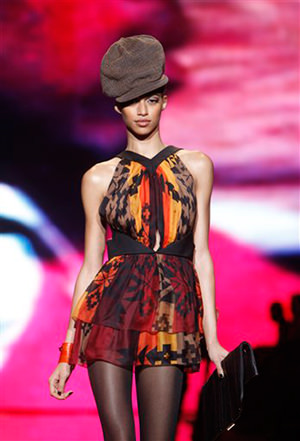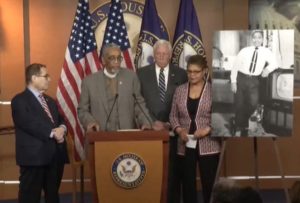Mixed Race Beauty Gets a Mainstream Makeover
We need to remember that beauty and race are both social constructions—concepts societies create that may not actually exist in nature. As a result, beauty and race are associated with and impacted by class, immigration, gender, sexuality and marketing.Are mixed race faces considered the most beautiful?
Are mixed race faces considered the most beautiful? A recent report from Allure magazine says yes. Results of a survey conducted by Allure reveal that 64 percent of its readers thought mixed race was the most attractive. The editors attribute the results to the growing population of mixed race youth. As much as I’d like to agree it appears that this is just another case of wishful racial thinking.
Here are a few reasons why. We need to remember that beauty and race are both social constructions—concepts societies create that may not actually exist in nature. As a result, beauty and race are associated with and impacted by class, immigration, gender, sexuality and marketing. Case in point: Since the Time magazine cover in the late 1990s, multiracials are more and more said to be the face of 21st century America. But what’s less known is that even this image was altered to look less “Hispanic/Latino” and more “European.”
The idea that mixed race faces are prettier is related directly to hybrid vigor, the biological phenomenon that predicts that crossbreeding leads to offspring that are genetically fitter than their parents. Hybrid vigor makes mixed race people somehow biologically different and prettier than non-mixed people by nature. Equally pernicious is the added effect that focusing on mixed race offspring continues to make race about sex and heterosexuality and to marginalize those who do not identify as heterosexuals.
With that in mind, we also need to think very carefully about what the rise in the mixed race population means. Despite interpretations of the 2000 and 2010 censuses, the idea that the Two or More Races (TOMR) population is somehow seeing a surge in the U.S. because of 1967’s Loving v. Virginia case is false. Multiracial populations have been in existence since the days of exploration, colonialism and enslavement. The rise that statistics are tracking now reflects people’s ability, willingness, perceived advantages and comfort in describing themselves as multiracial. This growing trend is certainly laudable and may even be a sign of personal progress, but it definitely does not reflect a change in standards of beauty. It might be more accurate to say that the surge in TOMR identification is a sign that we are moving away from the old tragic mulatta stereotype. This stereotype—applied mostly to women—says that multiracials desire to be white and that they loathe the nonwhite part(s) of themselves. Note that what’s still missing from the conversation is how even this unfortunate stereotype privileges mixes that include whiteness and marginalizes others (i.e., Asian-Black).
Perhaps what is most disturbing about the idea that mixed race women’s faces are the most beautiful is that no one is defining what mixed race actually looks like and why it seems to apply more to women than men. The closest we get to a definition is the mention of some celebrity. Even still, no one is explaining whether mixed race looks like Angelina Jolie, Rashida Jones or Michelle Obama. Despite the fact that all of these women claim a multiracial and/or multiethnic ancestry, they are not all seen as equal or as equally beautiful. Then there’s the controversy over Beyoncé Knowles’ increasingly lightening hair and complexion and recent appearance in blackface, which shows how uncomfortable we are with beauty standards in general and the ability of women of color to adapt to them.
It also seems increasingly inaccurate to say that mixed race people are changing our standards of beauty given the lack of diversity in New York’s 2011 Fashion Week. According to Jezebel, nonwhite models “made it onto the runways of New York City—one of the most racially diverse places on this planet—15 times” less than white models. What’s more, a recent study conducted by Harvard University explains that mixed race individuals are perceived differently depending on how they are mixed (i.e., Asian-White vs. Black-White) and that who gets to be perceived as mixed race depends on how racially ambiguous they look.
Given these facts, it is more accurate to say that mixed race people who appear racially ambiguous are being assimilated slowly into mainstream standards of beauty—not changing them.
In these critical times, your support is crucial...As we navigate an uncertain 2025, with a new administration questioning press freedoms, the risks are clear: our ability to report freely is under threat.
Your tax-deductible donation enables us to dig deeper, delivering fearless investigative reporting and analysis that exposes the reality behind the headlines — without compromise.
"Truthdig’s a lifeline for anyone who values democracy especially during these challenging times.”
— Fernando Villamare, Los Angeles, CA
Now is the time to take action. Stand with our courageous journalists. Donate today to protect a free press, uphold democracy and uncover the stories that need to be told.






You need to be a supporter to comment.
There are currently no responses to this article.
Be the first to respond.